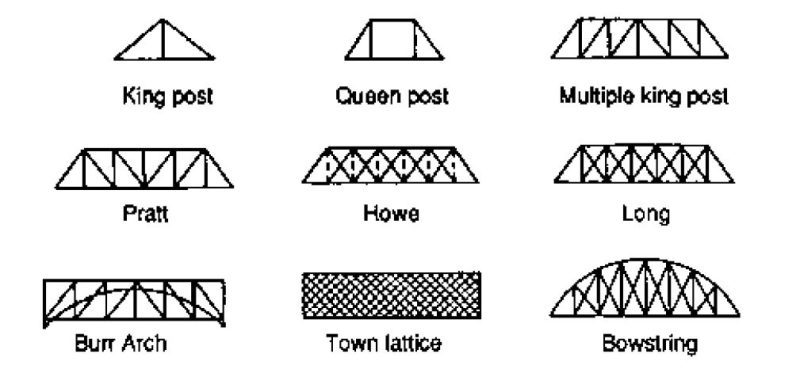Trusses are an essential element in the construction of a variety of structures, including buildings, bridges, and towers. They consist of a series of interconnected triangles that are designed to provide stability and support to the overall structure. There are many different types of trusses, each with its unique characteristics and applications. In this article, we will explore some of the most common types of trusses.
Pratt Truss:
The Pratt truss is one of the most common types of trusses used in building construction. It consists of a series of diagonal members that slant towards the center of the span, connected by vertical members. The Pratt truss is an excellent choice for long-span structures because it provides stability and strength while minimizing the amount of material required.
Howe Truss:
The Howe truss is similar to the Pratt truss, but it uses vertical members instead of diagonal members. This design makes it an excellent choice for shorter spans, where the weight of the structure is less of a concern. The Howe truss is often used in roof construction, where it provides stability and support while also allowing for a large amount of open space beneath.
Warren Truss:
The Warren truss is another popular type of truss used in building construction. It consists of a series of equilateral triangles, with diagonal members that slant towards the center of the span, and vertical members that connect the triangles. The Warren truss is an excellent choice for medium to long-span structures, as it provides excellent strength and stability while also minimizing the amount of material required.
King Post Truss:
The king post truss is one of the simplest types of trusses, consisting of a single vertical member (the king post) that supports two diagonal members. This design is commonly used in the construction of smaller structures, such as garden sheds and garages, as it is easy to construct and requires minimal material.
Queen Post Truss:
The queen post truss is similar to the king post truss, but it uses two vertical members (the queen posts) instead of one. This design provides additional stability and support, making it an excellent choice for larger structures such as barns and workshops.
Fink Truss:
The Fink truss is a lightweight, low-cost truss that is often used in the construction of residential roofs. It consists of a series of equilateral triangles, with diagonal members that slant towards the center of the span and horizontal members that connect the triangles. This design provides excellent strength and stability, while also being easy to construct and cost-effective.
Bowstring Truss:
The bowstring truss is a type of truss commonly used in the construction of bridges and industrial buildings. It consists of a curved top chord and a straight bottom chord, connected by diagonal and vertical members. The curved top chord provides additional strength and stability, making it an excellent choice for long-span structures.
Pratt Through Truss:
The Pratt through truss is a variation of the Pratt truss, commonly used in the construction of bridges. In this design, the truss is placed over the roadway, with the vertical members located beneath the bridge deck. This design provides excellent stability and strength, while also allowing for maximum clearance beneath the bridge.
Howe Through Truss:
The Howe through truss is a variation of the Howe truss, commonly used in the construction of bridges. In this design, the truss is placed over the roadway, with the vertical members located beneath the bridge deck. This design provides excellent stability and support, while also allowing for a large amount of open space beneath the bridge.

